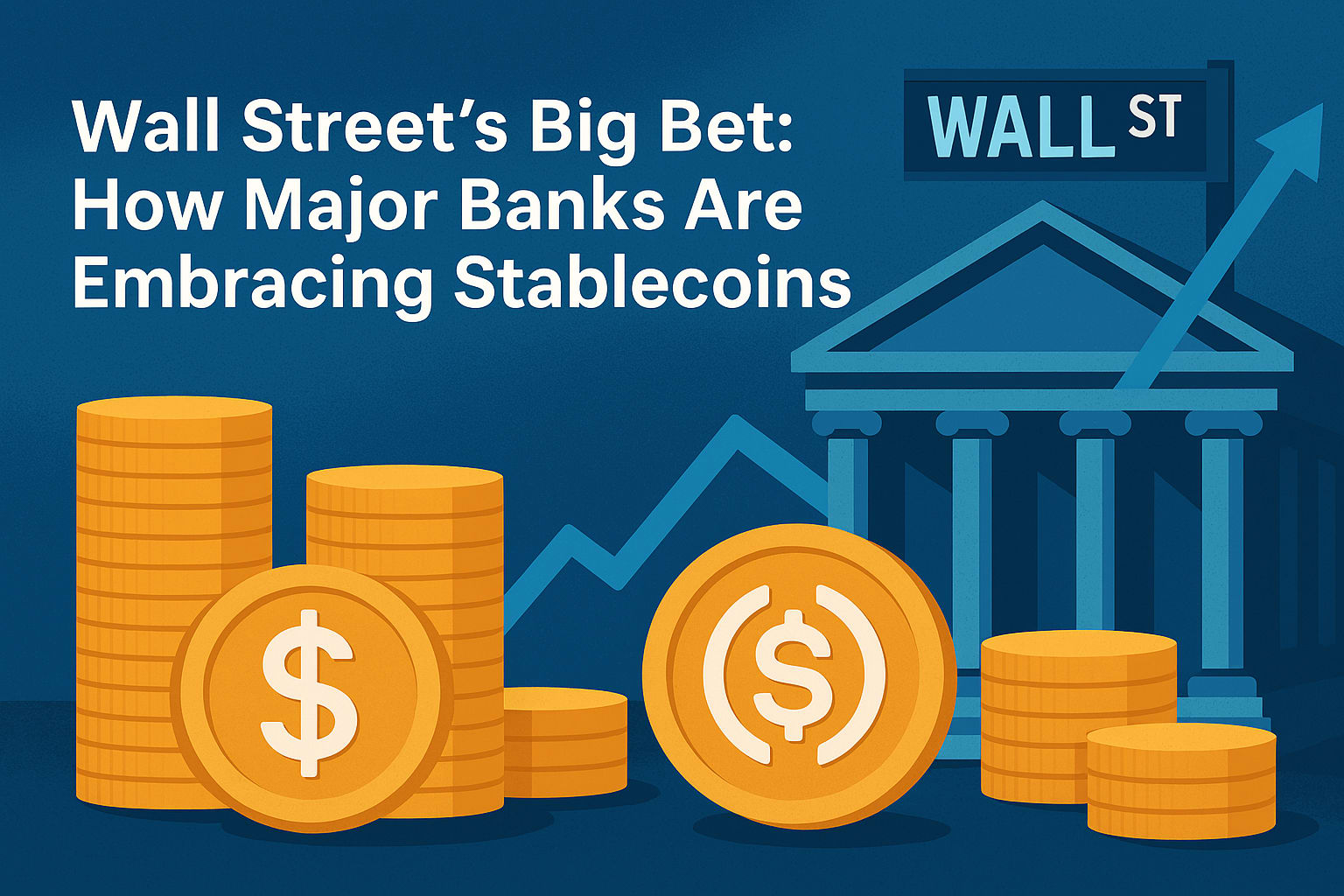In the ever-shifting landscape of global finance, Wall Street is making a bold move that has everyone watching — and it centers around stablecoins. Once a niche concept among crypto enthusiasts, stablecoins are now capturing the attention of institutional investors, hedge funds, and the very same banks that once dismissed digital currencies as speculative bubbles. This shift is more than just a passing trend; it’s a signal of a deeper transformation in how the world handles money.
The Wall Street stablecoin investment boom is not only reshaping crypto markets but also redefining the core of financial infrastructure. From settlements and payments to asset tokenization and DeFi exposure, big banks are making calculated bets on stablecoins, seeing them as key tools to modernize traditional finance while maintaining regulatory compliance.
Why Wall Street is Finally Taking Stablecoins Seriously
Stablecoins are digital assets pegged to stable fiat currencies like the U.S. dollar. Unlike volatile cryptocurrencies such as Bitcoin or Ethereum, stablecoins aim to provide price stability, making them ideal for real-time transactions and cross-border transfers. For years, financial institutions observed them from afar. But now, with billions of dollars flowing into the stablecoin economy, Wall Street is stepping off the sidelines.
The reasons are clear:
Efficiency and speed: Stablecoins allow for near-instantaneous settlement of transactions, reducing the need for expensive intermediaries and lengthy clearing processes.
Regulatory clarity: With increased guidance from U.S. regulatory bodies and clearer rules emerging globally, institutional adoption is becoming safer.
Programmable finance: Stablecoins can be embedded into smart contracts, offering programmable yield and liquidity strategies tailored for institutional investors.
As interest grows, so does the appetite for high-performing assets in the space. Investors are on the lookout for the best stablecoin to invest in 2025, eyeing those with strong transparency, robust reserves, and institutional-grade backing.
Major Banks Enter the Stablecoin Arena
Several high-profile institutions are leading the charge into the stablecoin market:
JPMorgan’s Onyx and JPM Coin
JPMorgan was one of the first major U.S. banks to launch its own stablecoin — JPM Coin — which is already being used to settle billions of dollars in intra-bank transfers. Their Onyx platform is currently handling over $1 billion in daily transactions, showing how stablecoins are no longer just experimental but operational at scale.
Citibank and Tokenized Assets
Citigroup recently announced pilot programs using blockchain to tokenize bonds and facilitate instant settlements via stablecoin rails. Their vision? A unified digital asset ecosystem where tokenized securities and stablecoins co-exist within a regulated framework.
Goldman Sachs and Digital Dollar Exploration
Goldman is reportedly working closely with fintech partners to create a dollar-backed digital token for internal operations, with plans to support external client use in the future.
This growing acceptance has sparked demand to hire stablecoin developers with knowledge of smart contracts, cross-chain interoperability, and compliance frameworks — a trend reflecting the accelerating institutional race.
The Search for Yield: Stablecoins as Income Instruments
Beyond transactional use, Wall Street’s interest in yield bearing stablecoin models is rapidly growing. In a low-interest rate environment, these coins offer a compelling value proposition. Through staking, liquidity provision, or DeFi lending protocols, stablecoins can provide a steady income stream — often outperforming traditional fixed-income products.
Take for example:
USDC and MakerDAO’s DSR (Dai Savings Rate), offering transparent yield mechanismsLiquid staking platforms that integrate stablecoins for liquidity while maintaining earning potentialOn-chain T-bill strategies, where institutions tokenize real-world assets and wrap them into stablecoins
These innovations are pushing investors to explore the top 10 stablecoins 2025, seeking projects that offer strong collateral, regulatory clarity, and real-world use cases.
The Regulatory Balancing Act
Of course, regulation remains a double-edged sword. On one hand, it offers the clarity institutions crave. On the other, it can slow down innovation or favor incumbents over open protocols. The U.S. is making slow but steady progress with proposals like the Stablecoin TRUST Act and various state-level frameworks.
Meanwhile, jurisdictions like Singapore, the UAE, and the EU are moving faster, attracting fintech companies and banks alike. With many firms setting up international divisions, compliance has become a top priority, further increasing the demand to hire stablecoin developers familiar with global standards.
Not All Stablecoins Are Created Equal
As billions flow into this sector, investors need to be cautious. Recent events, such as the collapse of algorithmic stablecoins like TerraUSD, serve as a harsh reminder that not all projects are built on solid ground.
That’s why due diligence is critical. Factors to consider include:
Reserve transparency and regular auditsCollateralization mechanisms (fiat-backed vs crypto-backed)Regulatory postureRedemption policies
Smart investors are already diversifying their exposure by studying the top 10 stablecoins in 2025 based on these fundamentals.
The Bigger Picture: From Payments to Tokenized Economies
Wall Street’s stablecoin push is more than just a tech upgrade. It’s a foundational change that could reshape everything from how we send remittances to how companies raise capital.
In the next decade, we may see:
Tokenized portfolios that pay dividends in stablecoinsAutomated payroll systems powered by programmable stablecoinsDeFi interfaces tailored for hedge funds and private equity firmsNation-states issuing their own stablecoin equivalents alongside CBDCs
In this ecosystem, the best stablecoin to invest in 2025 won’t just be one with stability — it will be one that unlocks utility, liquidity, and institutional integration.
What This Means for the Future of Finance
Wall Street’s embrace of stablecoins signals a turning point. This isn’t just a passing phase or a speculative experiment — it’s the beginning of a more agile, transparent, and decentralized financial infrastructure.
For retail and institutional investors alike, this moment presents both opportunity and responsibility. To navigate it wisely:
Research thoroughly before allocating capitalPrioritize audited and regulated stablecoinsLook for stablecoins with real-world adoption and on-chain utilityStay informed on evolving regulations and cross-border compliance
Stablecoins are no longer just a crypto product — they’re becoming the connective tissue between traditional finance and digital assets.
And as Wall Street makes its big bet, the world will be watching to see if stablecoins live up to the promise of being the future of money.
